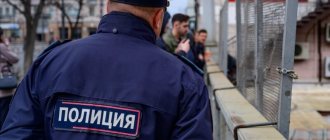Moscow
Saint Petersburg
Free consultation
Theft is one of the most common crimes in the crime structure of Russia and many countries around the world. The proportion of thefts ranges from 40 to 70 percent, depending on the region of our country. Theft is also one of the most ancient crimes; from time immemorial, people have stolen from each other, from society, from the state.
There are several types of theft. There are simple and qualified compositions.
In this article I would like to talk about the most dangerous type of this crime - burglary or, in layman's terms, burglary.
What is burglary in criminal law?
Theft in the understanding of the theory of criminal law and current criminal legislation is the secret theft of someone else's property.
Theft, in turn, is understood as selfish, gratuitous, unlawful seizure of someone else's property, causing property damage to the owner of this property.
Qualifying signs of burglary
Based on the above definitions, we can identify the signs of theft in general:
- The secrecy of the theft.
It is this feature that distinguishes theft from other elements of theft, such as robbery and robbery, in which the theft is committed openly. The main point of secrecy is the person’s awareness of this fact and his confidence in it. His intent is aimed specifically at secret theft (even if the thief is being watched from the side, but he does not see anyone, the theft will be secret, similar to committing theft under hidden CCTV cameras). - Free confiscation of property. The stolen property is confiscated from the victim free of charge , its value is not compensated in any way, and it is not subsequently returned to the owner.
- Having a selfish goal. Property is stolen by a person for the purpose of his own enrichment, to obtain some kind of selfish benefit for himself (he can spend money, give jewelry to someone, eat food, and so on).
If property is stolen without mercenary intent, then the crime will not be considered theft (for example, if property is taken from possession with the purpose of destroying it, then another article of the Criminal Code of the Russian Federation will be applied - destruction of someone else's property, and not theft). - Illegality of seizure of property. Taking property should be illegal. The seizure of the debtor's property or the seizure of material evidence during operational investigative activities cannot be considered theft.
Moscow
Saint Petersburg
Free consultation
Moscow
Saint Petersburg
What is the article of the Criminal Code of the Russian Federation for theft with penetration?
Theft with penetration is a qualified element of Article 158 of the Criminal Code of the Russian Federation, part two of which provides for liability specifically for the commission of this act.
Entry may be committed under criminal law in the following places:
- Room.
- Other storage (tank, locked cabinet located on private property, hangar, etc.).
- Housing.
Let us give a few examples for clarity and then below we will consider information on liability for this type of crime.
Theft with illegal entry into a home (burglary)
In criminal law, housing is understood as the place of permanent or temporary residence of a person. Such objects undoubtedly include:
- Private house, apartment, dorm room and so on.
- If a person constantly uses a dacha for living, which is equipped with everything necessary for this (electricity, water supply, gas, etc.), such a place will also be recognized as a home.
- Housing will also be a hotel room where a person stays at least for a short time.
- Also, the dwelling must include a compartment on the train and a cabin on the ship for the period of the citizen’s movement along the route.
Liability for committing theft by entering a home is established by paragraph “A” of Part 3 of Article 158 of the Criminal Code of the Russian Federation. The crime is classified as serious. The punishment will also correspond to it.
Example 1. Citizen S. is looking at a large house in a populated area, finds out from neighbors that an entrepreneur lives in this house, and sees an expensive car near the house. During the daytime, when there are no residents in the house, S. gets inside through an open window in a room of the house and steals money and gold items worth 150,000 rubles.
S.’s actions will be qualified as theft committed with penetration into a home under Article 158 Part 3 of the Criminal Code of the Russian Federation.
7(800) 350-23-68
Dmitry Konstantinovich
Expert of the site "Legal Consultant"
Ask a Question
The subject's liability for theft with entry into a home will occur only when the person enters specifically for the purpose of committing theft, with pre-formed intent. If a subject enters a home legally, for example, was invited as a guest and subsequently steals gold, then his actions cannot be classified as committed with illegal entry into the home (his presence in the apartment or house was initially legal, the intent arose later , when he saw gold jewelry unattended).
In this case, the citizen will be charged under another part or another paragraph of Article 158.
Illegal entry and theft by a group of persons
Burglary can be committed either alone or by a group of persons by prior conspiracy.
- A group of persons in this case will be a group of 2 or more people.
- Preliminary conspiracy means pre-planned actions of group members to commit a criminal act. In this case, burglary.
Example 2. F. and S. agreed to commit theft from a certain garage. At night, having broken through the brickwork of the garage, F. and S. entered the premises and committed theft of property in the amount of 35,000 rubles, causing damage in the corresponding amount by their actions. The actions of F. and S. were qualified as theft committed by a group of persons by prior conspiracy; they will be prosecuted under points “A”, “B” of part two of Article 158 of the Criminal Code of the Russian Federation.
Secret entry into the store and its robbery
This is a very common theft. But it is necessary to distinguish the thefts that occur every day in supermarkets when visiting them, from a well-planned and premeditated burglary.
Example 3. V. and T., having agreed in advance, prepared to commit theft from the Horns and Hooves store. At night, after squeezing the plastic window of the store, they got inside and stole goods worth 70,000 rubles.
The actions of these persons will also be qualified under points A and B of part two of Article 158 of the Criminal Code of the Russian Federation. Theft was committed by entering the store premises.
Unlike the simple theft of goods from a counter, burglary, in addition to the method of commission, is also distinguished by the social danger of the act committed. Therefore, the more “professional” the theft, the higher the degree of its social danger and the punishment, respectively.
Theft of apartment keys
Many people are interested in the question of whether stealing apartment keys is a crime. It depends for what purpose these keys were stolen.
If the subject of the theft simply wanted to annoy the homeowner (to take revenge, make a joke, etc.) and simply kept them for some time, and then returned them, planted them, or simply threw them out, then such actions do not form any corpus delicti.
There is no such sign of theft as mercenary intent, and the cost of the stolen keys is an insignificant amount to “pull” the initiation of a criminal case.
It’s another matter if the keys were stolen for a specific purpose - to commit theft from a residential premises or to transfer the keys to third parties to commit the same theft.
- In the first case, theft of keys will be considered as preparation to commit a crime and will be qualified under Part 1 of Article 30, Part 3 of Art. 158 of the Criminal Code of the Russian Federation.
- If your intent was to transfer the keys to someone so that they could commit theft, then your actions will be qualified as complicity in theft. The person will be an accomplice and brought under Article 158 Part 3 of the Criminal Code of the Russian Federation.
Moscow
Saint Petersburg
Free consultation
Moscow
Saint Petersburg
Brief historical information about the settlements of the Akhtanizovsky rural settlement
The Akhtanizovskoye rural settlement is located in the northern part of the Temryuk region, its territory is washed by the Azov Sea in the north and the Akhtanizovsky estuary in the east.
The climate is temperate continental, mild and short winters, but in some years it can be severe. Summer is dry, long, and very hot.
There are three settlements on the territory of the Akhtanizovsky rural settlement: the village of Akhtanizovskaya, the villages of Persyp and Za Rodinu, located on the coast of the Azov Sea.
The administration of the Akhtanizovsky rural settlement is located in the village of Akhtanizovskaya.
Full history of the Akhtanizovsky rural settlement:
Chapter I. From the history of settlements of the Akhtanizovsky rural settlement
1.1 From the history of the village of Akhtanizovskaya
Akhtanizovskaya is one of the first Cossack settlements, founded in 1794. Black Sea residents who arrived in Kuban. It was named after the name of the estuary “Agdeniz” - the village of Agdenizovsky. The name of the estuary comes from the Turkish word “Agdeniz”, which means “White Sea”.
But there is another version of the name of the village. The Cossacks, driving through our places, climbed a local landmark - Mount Blevaku, and saw a magnificent picture! Below, like a large blue dish, lay the estuary, and near the very shore there was a village, all in flowering gardens. The combination of white and blue amazed the Cossacks so much that they exclaimed: “Oh, there’s the bottom!” Over time, the name of the village “Agdenizovsky” changed to “Akhtanizovsky”.
A.P. Obabko, who compiled a historical certificate in 1912, attributed the founding of the village to 1812, but in the Geographical and Statistical Dictionary of the Russian Empire, published in St. Petersburg in 1863 (compiled by P. Semenov) it was written:
“Akhtanizovskaya village of the land of the Black Sea army (now Kuban region) of the Taman district, is located on the northwestern tip of the estuary of the same name, 3 versts in the southeast of the Sea of Azov, almost 40 versts from Taman and 20 versts from Temryuk , is located on the site of the ancient Greek city of Kenos, the village was founded in 1794.”
Thus, it was established that the village was founded in 1794.
In 1840, the village began to be called a village. At first, the population of the village of Akhtanizovskaya was small, consisting of former Cossacks who fled to Turkey during the destruction of the Zaporozhye Sich and after some time returned to the Black Sea region.
The military authorities first of all obtained permission to build the church, although this required the consent of the Catherine's Ecclesiastical Consistory. On February 8, 1817, permission was given to residents of the village of Agdenizovsky to build the Church of St. Boris and Gleb. But they started talking about building a school only 45 years later. The first school, which was built in 1863, was sheltered in a Cossack hut. For many years there was no medical care in the village, although the residents often suffered from fever, did not take any medicine, but gradually recovered. Witchcraft flourished.
Directly by the end of the 90s of the 19th century, the population in terms of size and literacy looked as follows: the total number of families - 408 (of which 317 were Cossacks); including 1210 men, 1184 women. Of the 408 families, 231 had literate family members (mostly men were literate, and only 13 women could read and write).
In the village, the economy was divided into the following sectors:
agriculture - 347;
fishing - 9;
other- 18.
Initially it was believed that our village was founded in 1812, so in 1912 the village celebrated its 100th anniversary. The village leaders built a modest monument in the center of the village, on the marble plaque of which there are the following words: “To grandfathers and great-grandfathers from grateful posterity.” Alexey Petrovich Obabko wrote a historical brochure for this anniversary, “Stanitsa Akhtanizovskaya 1812 - 1912,” which was published in a circulation of about 1000 copies and distributed free of charge to every household.
A monument built in honor of the 100th anniversary of the village of Akhtanizovskaya.
The main source of citizens' well-being was land; before the revolution, only Cossacks who had reached the age of 17 were allocated arable land. Life in the village of Akhtanizovskaya passed slowly. Every year in January the village saw off the next batch of young Cossacks for military service.
The news of the February revolution came to Akhtanizovskaya a little after it happened. On March 25, 1917, the last village ataman, Nikolai Guly, was deposed, who later turned out to be an active participant in the counter-revolutionary uprising. An executive civil committee was organized in the village.
In October 1917, the Bolsheviks led by Lenin won. But Soviet power was established in Kuban with great difficulties. This was explained by the high proportion of the Cossacks, who for many centuries were the support of the autocracy.
On January 25, 1918, the First Taman Regional Revolutionary Congress took place, which wrote in its resolution: “Soviet power is the only legitimate power and all its decisions are binding on the population...”
The first military revolutionary committee was created in the village, headed by Ilya Mitrofanovich Streblyansky. Resistance to the counter-revolution in the village of Akhtanizovskaya in the summer of 1918 was especially fierce. When the whites came to the village, reprisals followed against supporters of Soviet power. Many went to the city of Temryuk, some fled to the floodplains. THEM. Streblyansky was tortured and drowned by the whites in a well.
In 1920, having overcome all difficulties and defeated the counter-revolutionary detachments, Soviet power was finally established in Kuban. The population of the region began restoration work. In April 1920, a body of Soviet power was created in the village of Akhtanizovskaya - the village revolutionary committee; until 1920 there were no party members in the village; G. N. Baturin became the first Bolshevik of the village (later one of the streets was named after him).
Back in the summer of 1920, the first party cell was created in the village under the leadership of A.D. Koba, consisting of five people, and in December 1922, a Komsomol cell of six people was created.
The pioneer organization arose shortly after the birth of the Komsomol cell, in December 1924, there were 34 boys and 24 girls in it.
In 1920, agricultural artels “Smelaya” and “Proletarskaya” were created on the territory of the village on the former estates of landowners. Both artels had 400 hectares of land; 200 people worked in the artels.
In 1922, another artel named after V.I. Lenin arose. The first partnership for joint cultivation of land arose in 1925; in 1923 there were already 9 TOZs.
As you know, in January 1931, the Central Committee of the Communist Party adopted a resolution “On the collectivization of agriculture in the North Caucasus.” Collectivization in the village of Akhtanizovskaya proceeded at a slow pace (according to February 1931, collectivized farms in the village of Vyshesteblievskaya were 75.5%, Golubitskaya - 77%, Zaporozhskaya - 89%, and in the village of Akhtanizovskaya only 50%).
In the 1930s, the first collective farm “named after. Comrade I.V. Stalin" (comrade Kondratov became the chairman). At this time, seeking raw material resources for the developing industry, cultivation of unirrigated cotton was practiced in Taman. Hence, in the newly emerged collective farm, along with grain crops, cotton growing was one of the main industries. Cotton grafting in the village was slow and difficult (for example, in 1931, only 2% of cotton was weeded, i.e., out of 1022 hectares, 45 hectares were processed).
In 1935, the collective farm named after. Comrade I.V. Stalin" was divided into three collective farms:
1.Collective farm named after. I.V. Stalin" chairman A.P. Chernomorets.
2.Collective farm named after. Voroshilov" chairman F. M. Tregubenko.
3. Collective farm “Red Dawn” (on the Soleny farm), chairman A. T. Nesterenko.
On June 22, 1941, the Great Patriotic War began. On September 2, 1942, the Germans captured the station. Akhtanizovskaya. Hard times have come for the population of the village. The Germans deported the youth of the village to forced labor in Germany; many village residents were killed by the Germans in the village itself on suspicion of loyalty to Soviet power. The collective farms of the village were completely destroyed by the Germans.
Our village was liberated from the Nazi invaders during the night assault by Soviet troops on October 7, 1943.
A difficult period of restoration of the destroyed collective farm begins. Already in 1946, the collective farm named after. I.V. Stalin" fulfilled the livestock production plan by 117%.
On September 30, 1957, the Secretary of the CPSU Central Committee N.S. Khrushchev, while staying in Taman, visited our village, after which, with his light hand, Taman was declared “Soviet Champagne”. From that moment on, vineyard plantations turned green on the collective farm fields.
Meeting of residents of the village of Akhtanizovskaya with N.S. Khrushchev. on Krasnaya street. Photo 1957
In a conversation with old-timers, she recalled the defeat of the White Guards in the Kuban: “After all, comrades, in the ranks of the Red Army in the 20s, I walked the entire Kuban on foot from Rostov-on-Don to Akhtanizovskaya.”
The changes also affected the public utilities environment. In the 1950s, 40 km of power lines were laid in the village, a water supply system was built, and an asphalt road was laid. In 1964, gas cylinders appeared in many homes (previously food was cooked using kerosene gases)
In 1959, two collective farms named after Stalin and named after Voroshilov merged, and the Rossiya state farm was formed. Subsequently, our state farm was renamed into the Akhtanizovsky wine state farm. In 1974 - 75 A winery was attached to the state farm. The farms grew, and in January 1976, the Lazurny wine state farm was separated from the Akhtanizovsky wine state farm, whose office was located in the village of Za Rodinu.
In 1972, on the territory of the Akhtanizovsky rural settlement, an expedition led by N.I. Sokolsky discovered the Taman Tholos, an archeological monument of the second quarter of the 3rd - mid-2nd centuries BC. 1.5 km from the Sea of Azov and 0.5 km from the southwestern outskirts of the village of Za Rodinu.
The country's transition to market relations and the collapse of the USSR contributed to changes in the life of our country. The changes also affected the Akhtanizovskoye rural settlement.
In 2000, a church was opened in the village, which had not existed before.
In the church of the village of Akhtanizovskaya.
In the center is the rector of the Borisoglebsk parish, Father Mikhail.
In May 2002, the municipal enterprise “Bytservis” was created. In 2002, bus stops were built along the Temryuk-Akhtanizovskaya highway, and the Temryuk-Akhtanizovskaya minibus runs regularly.
Peresyp is a small village on the coast of the Azov Sea, which is rapidly turning into a resort.
The village of Peresyp was founded as a postal station on the Tamansky Shlyakh (postal road between Yekaterinodar and Taman).
The name of this village comes from the combination of the words “pour sand.” During strong winds and rains, sea sand clogged the previously narrow channel from the Sea of Azov into the Akhtanizovsky estuary. And the fishermen residents manually cleared the canal of sand (hence the name of the village of Peresyp).
The village of Za Rodinu is a small village where the descendants of the Nekrasov Cossacks live.
Chapter II. Geographical and natural features of the Akhtanizovsky rural settlement, characteristic flora and fauna.
The Akhtanizovskoye rural settlement has unique natural and climatic conditions and historical and cultural objects.
The village of Akhtanizovskaya is located along the northwestern coast of the Akhtanizovsky estuary. Its southern outskirts are closely adjacent to the Akhtanizovskaya hill and stretch along the Khimki floodplain towards Mount Borisoglebskaya.
The Taman Peninsula has long been called a peninsula of volcanoes, but only mud volcanoes. There are about thirty of them. There are several mud volcanoes on the territory of the Akhtanizovskoye rural settlement: Akhtanizovskaya Blevaka, Mount Borisoglebskaya, Mount Tsymbaly volcanoes and Tizdar volcano.
The main attraction of our village is Akhtanizovskaya Blevaka.
Akhtanizovskaya Blevaka reaches a height of 67 meters above sea level. The base of the hill is a dome-shaped rise of dark gray fossilized limestones of the Sarmatian stage and Cimmerian clays. A cone consisting of bluish-gray clay is set on the dome of a small fold.
More recently, this volcano was in constant activity. Gray tongues of clay lava are visible on its slopes. From the mouth of a hill the diameter of a large plate, at first a deep sigh was heard, then a dark gray liquid mass slightly smelling of hydrogen sulfide was pushed to the surface and slowly began to flow down the already laid channel, filling the depressions and freezing there. After some time, the volcano seemed to sigh again and spit out another portion of the mash cooked in the depths. The volcano acted rhythmically.
Currently, the activity of the volcano has weakened, and where the crater was, a dry crater with a diameter of about 1.5 meters and a depth of up to 1 meter has formed. But from time to time, new salsas form next to the old crater and portions of gray mud pour out of them. The top of the hill is covered with a layer of dried, cracked gray breccia.
Mount Borisoglebskaya (Boris and Gleb)
It was probably named in memory of princes Boris and Gleb, whose icons were found in the remains of the destroyed temple.
The height of the hill is 64.7 m above sea level. Located in the western part of the Bolshoi Akhtanizovsky Estuary. Some of its points are at an altitude of 21.7 (in the northern part towards the highway), while others gently descend to the estuary (13 m).
In 1998, an active landslide process began on the hill from the Akhtanizovsky estuary.
Boris and Gleb Hill is of volcanic origin. There has been no release of dirt in recent years, but in some places there has been a release of gases.
Tsymbaly Hill
If you look from the side of the highway, the hill is a continuation of the Akhtanizovskaya hill. Its peaks have a height of 107.7 m and 114.2 m above sea level.
Tsymbaly Western and Tsymbaly Vostochny and Akhtanizovskaya Sopka form a common hill, extended in a north-east direction for 6.5 km. This ridge with rather steep slopes approaches the highway near the village of Zaporozhskaya. A powerful eruption of the Western Tsymbaly volcano was recorded in the first half of the 19th century, when a tongue of volcanic mud reached 300 m. On Eastern Tsymbaly, the volcano breccia is saturated with oil. (Shnyukov, 1986).
Currently (in 2002), the Abyss volcano in Western Tsymbaly is “speaking.” The first shock and movement of the mud avalanche was noticed by local residents on February 13. Within a week, its crater reached a diameter of 280 meters, and the length of the mud flow was 700 m. What was happening was recorded by specialists from the Azov branch of the State Unitary Enterprise “Kubangeology” (director I.N. Gusakov).
The eruption continued in March 2002. Two craters with an area of 50 m2 each, the total area of squeezed out clay is 300 m2, then landslides continued after the rains. Two power transmission towers fell (G. Kolotilov, head of the detachment of the Azov branch of the State Unitary Enterprise “Kubangeology”), which the region’s power engineers managed to quickly restore.
The clay flow in its movement and frozen state resembles a lava flow. The products of the eruption are a mixture of clay masses, rock fragments, formation waters, hydrocarbon gases with the smell of oil and even its admixtures.
The translation and origin of the name “Tsymbaly” is unknown. The Black Sea Cossacks named this hill Tsymbalov Ridge.
Currently, the volcano looks like this: huge shafts of frozen breccia, dark soil interspersed with light layered rock, possibly carbonates. On the mounds of soil among the torn up dead rock, seedlings of cereals and tragus saltwort are making their way. Salt crystals are clearly visible on some steep walls.
Paleontological finds on Tsymbaly open pages of the history of the habitation of ancient animals on this land. Thus, bones of panthers, Taman beaver, Trigonatherium beaver, Phanagorian elephant, Etruscan rhinoceros, Sussenbor horse, camel, compound horned deer, giant deer, Taman fawn elk, gazelle, forest antelope, short-legged bison were found on Tsimbaly (Burchak-Abramovich, Flyagin, 1990).
On the slopes of Tsymbal, Borisoglebskaya Mountain, and Akhtanizovskaya Hill, the soil is clayey, mostly solonetzic. Here you can find the usual vegetation of the Taman steppes: cereals (Aegilops cylindrical, timothy, bromegrass, maned barley, fescue, feather grass), legumes (several types of chin), asteraceae (kozel, yarrow, etc.) and other plants. In Eastern Tsymbaly, yarrow with yellow flowers and other interesting species of Taman flora are found. Of particular interest are steppe ephemerals (forget-me-nots, spring flowers, valerian, pansies, stars) and ephemeroids (Bibirshtein's tulman, tuberous valerian, muscari racemosus, onions, Sarmatian belvalia).
In summer, the slopes of Tsymbal and Borisoglebskaya Mountains are covered with cereals and herbs. Purple sage inflorescences, pink-blue inflorescences covered with prickly hairs, blue chicory inflorescences, amber flowers of St. John's wort, low clumps of thyme. In the air is the aroma of flowering plants, the hum of bees and bumblebees, busily examining the flowers in search of nectar and pollen.
Licorice, seaside eryngium, katran, astragalus, alfalfa, and timothy grow on the sandy shores of the Azov Sea. On the Wild Beach you can find thickets of trees and shrubs, among which are hawthorn, wild pear, dogwood, rose hips, blackberries, and thorns.
The fauna is quite diverse. Of the invertebrates, the insects listed in the Red Book of the Krasnodar Territory are of greatest interest (carpenter bee, purple xylocopa, clay bumblebee, podalirium, swallowtail, hawk moth (death's head).
The Akhtanizovsky Estuary is home to semi-anadromous fish (pike perch, ram, bream), freshwater fish (carp, pike and others).
Amphibians: lake frog, green and gray toad, common tree frog.
Reptiles: common and water snakes, steppe viper, yellow-bellied and four-striped snakes, marsh turtle. Birds and mammals are the most diverse group of animals. There are especially many waterfowl (seagulls, ducks, geese). Birds of swamps and shores of water bodies (great and little egrets, gray heron, great grebes, waterhen, bittern and others). In the reed thickets there are wild boars, foxes, and also muskrat, imported from North America. The surviving animal species of the steppe zone include the common vole, ground squirrels, mouse mice, field mice, mole rats, brown hare, hedgehogs, moles, jerboas and weasels. Birds include rooks, larks, quails, and gray partridges.
Akhtanizovsky Estuary is the largest freshwater body of water in the Krasnodar Territory. Its area is 94 km2, the greatest depth is 1.6 m. Akhtaniz is surrounded from the south by the Starotitarovskaya Upland, cut by numerous gullies and ravines, and Mount Borisoglebskaya rises in the west. In the north rises the Golubitsky outlier, the slopes of which rise like a steep wall to the estuary.
Now the shores of the estuary are a world of reed grass, unafraid birds, and the delicate aroma of pink lotus. The land of mosquito songs, a haven for ducks, coots, grebes nesting in reed thickets, and a spawning ground for pike perch. Here it is - a concert hall for evening performances of tenors - mosquitoes and a polyphonic choir of frogs. Here the white and yellow egg pods lower their graceful petals onto the water and send their inheritance to the bottom - prickly seed balls - water chestnut - chilim. On the reed hummocks in the open sunny space there were seagulls, and in the thickets, in self-built huts made of reeds up to one meter above the water, there was a muskrat. Sometimes a fox or a hare appears on the shore of the estuary, and very rarely - an unsociable wild boar, choosing the most remote habitats for its family.
In the Akhtanizovsky estuary, located on the territory of the Temryuk region, the lotus was planted by human hands, artificially, but in warm fresh water, in shallow water it found a fertile environment for growth and flowering. And now the Lotus Valley is one of the local attractions that the locals are proud of.
Valley of Lotuses in the Akhtanizovsky Estuary.
Volcano Tizdar. In Sinyaya Balka, next to a brick factory, not far from the village of Za Rodinu on the slope of Mount Tizdar, there is a mud volcano, which is sometimes called Sinyaya Balka or Tizdar. Mount Tizdar juts out like a small hill into the Sea of Azov. In exposed areas of the mountain, layers of clay of various colors are visible. Blue clay flows onto the seashore and, when dried, becomes gray, just like the mud of a volcano. The Tizdar mud volcano has a crater with a diameter of 15-20 meters with liquid mud. Diving into mud is not only beneficial for our body, but also a very fun activity.
Swimming in Tizdar
Punishment for burglary
As mentioned above, criminal liability for burglary and theft is provided for in two parts of Article 158 of the Criminal Code of the Russian Federation.
In the table, we will look at how many years are given for committing theft with entry into a premises or other storage facility - clause b, part 2 of article 158 of the Criminal Code of the Russian Federation, clause a, part 2 of article 158 - theft by a group by prior conspiracy and entry into a home – clause a, part 3 of article 158 of the Criminal Code of the Russian Federation.
| Article sanction | clause a, b, part 2 of article 158 – entry into premises or other storage | clause a, part 3 of article 158 of the Criminal Code – entry into a home |
| Fine | Up to 200 thousand rubles or up to 18 months’ salary | From 100 to 500 thousand rubles or in the amount of salary from 1 to 3 years |
| Mandatory work | Up to 480 hours | — |
| Correction work | Up to 2 years | — |
| Forced labor | Up to 5 years | Up to 5 years |
| Deprivation of liberty | Up to 5 years | Up to 6 years with or without a fine of up to 80 thousand rubles or in the amount of the salary or other income of the convicted person for a period of up to six months |
As you can see, the sanctions in the article for theft from a home are somewhat stricter than from a simple premises.
Liability for attempted burglary
In case of attempted theft with penetration, criminal liability arises on a general basis using Article 30 of the Criminal Code of the Russian Federation.
If there was an attempt to commit theft by breaking into a home or premises and other storage, but the intent was not completed due to circumstances beyond the control of the person (the owner returned and had to leave, the alarm in the house went off, the thief was caught at the scene of the theft, the key did not fit the lock and so on) the person will be judged as if the event had taken place.
An exception would be a voluntary refusal to commit a crime, which will be discussed in another article.
You can read more about the assassination attempt in this article.
Attempted theft: liability
In the case where the criminal has the opportunity to complete the theft process, but then his actions stop, in court such behavior of the criminal can be defined as a refusal to commit the crime. The court will take into account the following:
- voluntariness of renunciation of crime;
- no attempts to repeat it;
- conditionality of refusal from further criminal actions (the person remembered the criminal punishment).
If the crime was not completed for an objective reason, such as a powerful lock or a strong safe, it will be considered committed. The consequence of the fact that the criminal voluntarily refused to commit a crime will be his release from criminal liability.
Judicial and investigative authorities have the right to terminate criminal proceedings if a corresponding application from the injured party is received. This is possible if the suspect committed a minor crime and this happened for the first time. In this case, the attacker and the victim reached an agreement, the offender compensated for the damage caused. These actions are not applicable in case of robbery. It is considered a completed crime from the moment the offender commits the attack.
What to do if your apartment is broken into/robbed?
If you are not spared by such an event as theft from your home, you first need to act as follows.
- Try to carefully, so as not to destroy possible remaining traces of the criminals, inspect the premises into which there was penetration in order to establish a complete list of the stolen items.
- After this you need to call the police.
You need to contact the nearest police department serving the area where you live. There is no need to visit the police in person; the application can be made by telephone.
Step 1. Inspection of the scene of the incident and drawing up a protocol
After making a telephone message, you need to wait for the employees to arrive and provide them with your home for inspection. Based on the results of the inspection, a protocol of the same name will be drawn up.
obrazec_protokola_osmotra_mesta_proisshestvija
Before the inspection begins, the owner of the premises or the person currently living in it must legally give written permission to conduct it.
Before the arrival of the police task force, try to remember the signs of the stolen property (shape, weight of gold items, scratches on the body of the equipment, color of fur coat, size of clothing, cash bills, etc.) in order to create as accurate a description as possible. Make a preliminary assessment of the stolen property.
All this is necessary for the further search for your property.
Step 2. Writing a report of theft to the police
Upon the arrival of the police, the investigator or the person conducting the inquiry will ask you to write a statement about the fact of theft, immediately at your home, or will invite you to testify and draw up a statement at the police department.
The application is drawn up on the prescribed form or in free form. There are no strict requirements for its form.
As a rule it is indicated:
- addressee - the head of the police department of your area, indicating the full name, position and rank of the official;
- applicant - your full name, residential address;
- a list of stolen goods indicating the preliminary cost and amount of property damage caused to you;
- a request is made for the need to search for the stolen person and the unknown persons who committed the theft;
- applicant's signature and current date.
obrazec-zayavleniya-v-policiyu-o-krazhe
Usually police officials tell you in detail how and what to write, and no difficulties arise with this. If they don't help you, stick to the form suggested above.
The times when law enforcement officers did not register accepted applications or refused to accept them, citing some circumstances, are long gone.
But nevertheless, you need to know that according to the police regulations, after accepting the application, you must be given a numbered notification coupon , which contains information about the acceptance of the application, the official who accepted it, the number and the current date. If you have not received a ticket, your rights have been violated.
Step 3: Consideration of the burglary report
The Russian Criminal Procedure Legislation sets a period of 3-10 days ; in exceptional cases, this period can be extended, but not more than 30 days .
Within the specified time frame, the application submitted by you must be considered and a decision made:
- to initiate a criminal case;
- refusal to initiate criminal proceedings;
- about sending an application by territoriality (if you applied to a police department that does not serve your address territorially).
As you can see, the list is not so long. To issue a decision to refuse to initiate a criminal case, police officers need very compelling reasons. In cases of theft of other people's property, this is, as a rule, an underestimation of the stolen property.
7(800) 350-23-68
Dmitry Konstantinovich
Expert of the site "Legal Consultant"
Ask a Question
2,500 rubles is the required amount for the assessment of the stolen property to recognize the theft as having taken place at the present time. When committing qualified theft, which includes theft from premises and especially from a home, this amount may be less. The main thing is that it does not fall under the concept of insignificance , which is regulated by Article 14 of the Criminal Code of the Russian Federation.
And if the amount is significantly more than the specified amount, a criminal case will definitely be initiated, and you will definitely be notified about it.
An assessment of the stolen property, based on your testimony, is done in specialized institutions at the request of the police . If you do not agree with this assessment, you can order an assessment from a similar company yourself.
If any difficulties or controversial issues arise with the registration and consideration of your application, you can seek help from a criminal lawyer. On our website you can ask any question on this topic absolutely free.






